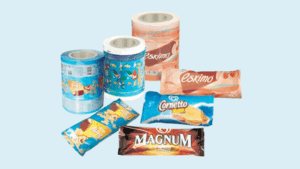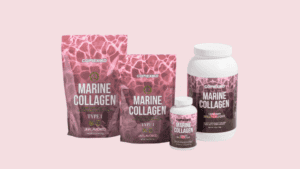Last Updated on March 3, 2025 by Packoi Team
Let’s face it. Environmental concerns are at an all-time high, and businesses are feeling the pressure to adopt sustainable practices.
One of the most significant areas where businesses can make an impact is their packaging. Eco-friendly packaging not only reduces the carbon footprint but also enhances a brand’s image as a socially responsible entity.
From using biodegradable materials to incorporating innovative designs, there are countless ways to make your brand’s packaging even more sustainable.
In this blog, we bring you 23 inspiring examples of eco-friendly packaging that will not only drive your business forward but also help protect the planet.
The Importance of Eco-friendly Packaging
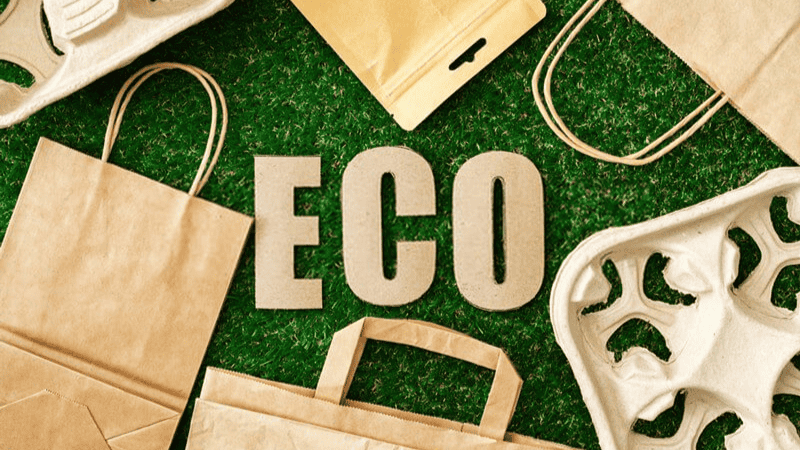
In recent years, for example, there has been a growing concern about the impact of packaging waste on the environment. The world is producing more waste than ever before, and much of this waste is made up of non-biodegradable materials like plastic.
This has led to a push for more eco-friendly packaging options that are sustainable and reduce waste. Let’s explore the importance of eco-friendly packaging!
1. Environmental Conservation
One of the primary reasons for embracing eco-friendly packaging is its contribution to environmental conservation. Traditional packaging materials such as plastic, styrofoam, and non-recyclable paper contribute significantly to pollution and resource depletion.
Eco-friendly packaging, on the other hand, utilizes sustainable materials like recycled paper, cardboard, biodegradable plastics, and plant-based alternatives. By opting for these materials, businesses can reduce their carbon footprint, conserve natural resources, and minimize environmental degradation.
2. Reduction of Waste
The proliferation of single-use packaging has led to a global waste crisis, with landfills overflowing and oceans choked with plastic debris. Eco-friendly packaging addresses this issue by promoting reusable, recyclable, and biodegradable alternatives.
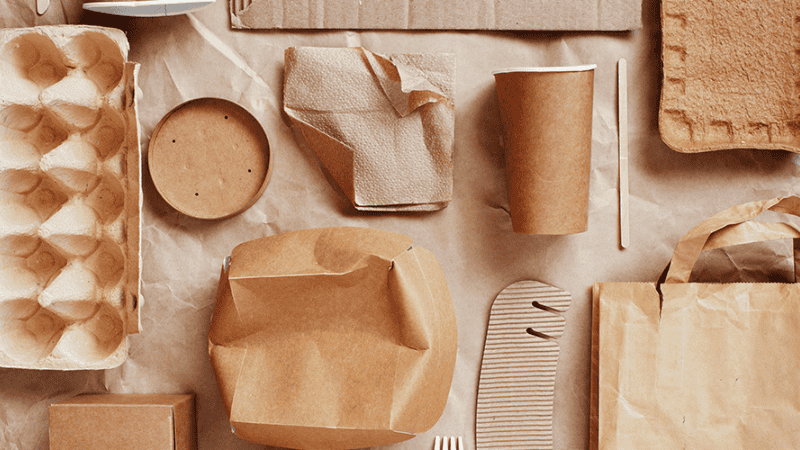
For instance, reusable tote bags, compostable food containers, and recyclable paper packaging significantly reduce the amount of waste generated. By embracing eco-friendly packaging practices, businesses can minimize their contribution to landfills and marine pollution, paving the way for a cleaner and healthier planet.
3. Consumer Preference
Consumers are increasingly gravitating towards brands that demonstrate a commitment to sustainability and environmental responsibility. Studies have shown that a significant portion of consumers are willing to pay a premium for products packaged in eco-friendly materials.
By aligning with consumer preferences and values, businesses can enhance their brand image and reputation, attract environmentally conscious consumers, and foster brand loyalty.
Eco-friendly packaging serves as a tangible demonstration of a brand’s commitment to sustainability, resonating with consumers who prioritize ethical and eco-conscious purchasing decisions.
4. Regulatory Compliance
With governments around the world enacting stringent environmental regulations, businesses are under increasing pressure to comply with sustainability standards. Many jurisdictions have implemented measures to restrict the use of single-use plastics and promote eco-friendly packaging alternatives.
By proactively adopting eco-friendly packaging practices, businesses can ensure compliance with regulatory requirements and avoid potential fines and penalties.
Moreover, embracing sustainability initiatives can position businesses as leaders in their respective industries, demonstrating a commitment to corporate social responsibility and environmental stewardship.
5. Cost Savings
Contrary to popular belief, eco-friendly and sustainable packaging ideas can result in long-term cost savings for businesses. While investing in sustainable packaging materials may seem higher initially, the benefits far outweigh the costs in the long run.
For example, switching to lightweight materials reduces transportation costs, while recyclable and biodegradable packaging minimizes waste disposal expenses.
Additionally, eco-friendly packaging can enhance operational efficiency by streamlining packaging processes and reducing the need for excessive packaging materials.
By adopting sustainable packaging practices, businesses can achieve cost savings while simultaneously promoting environmental sustainability.
Types of Eco-Friendly Packaging
We all know that environmental consciousness is not just appreciated now but also expected. Due to this, businesses across the globe are increasingly turning to eco-friendly packaging solutions.
These sustainable practices not only reduce waste but also resonate with consumers, who are eager to support brands that care about the planet.
Let’s explore four types of eco-friendly packaging: biodegradable and compostable packaging, multiple-use eco-friendly packaging, recyclable packaging, and minimal packaging.
1. Biodegradable and Compostable Packaging
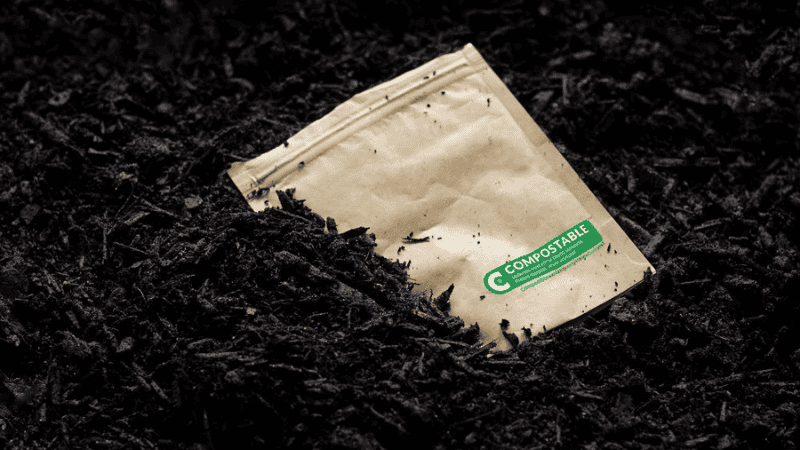
Biodegradable and compostable materials break down naturally and return to the earth, helping to reduce landfill waste. This type of packaging is particularly popular among businesses that are committed to full-cycle sustainability.
Biodegradable materials decompose naturally within a few years, depending on environmental conditions and material composition. Compostable materials, on the other hand, require specific composting conditions to break down, typically in a commercial composting facility, and turn into nutrient-rich soil.
Innovations in this area include materials like PLA (polylactic acid), which is made from fermented plant starch (usually corn) and is both biodegradable and compostable. Another exciting innovation is the use of natural fibers like hemp, jute, and even mushroom mycelium.
These materials not only decompose naturally but often do so without leaving toxic residues, unlike some traditional plastics.
2. Multiple-Use Eco-friendly Packaging
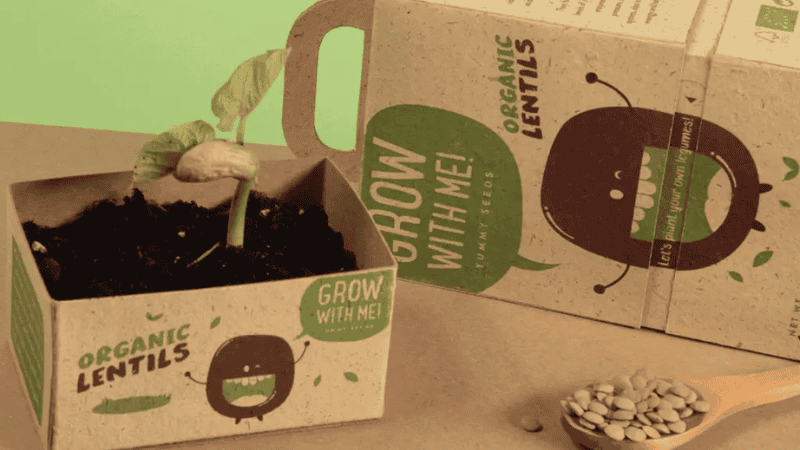
Multiple-use or reusable packaging is designed to reduce waste by extending the life of the packaging components. This type of packaging encourages consumers to reuse the package several times before discarding it.
Brands are innovatively adopting this practice by creating smaller packages that can serve secondary uses. For example, glass jars can be repurposed as storage containers or cloth bags that can double as shopping or tote bags.
Reusable packaging not only minimizes waste but also often results in a better customer experience and brand loyalty. Items like durable drawstring bags, sturdy paper bags, empty product boxes, and multi-functional boxes are popular choices.
These packages are designed to be attractive and durable, encouraging consumers to keep and reuse them rather than discard them after a single use.
3. Recyclable Packaging
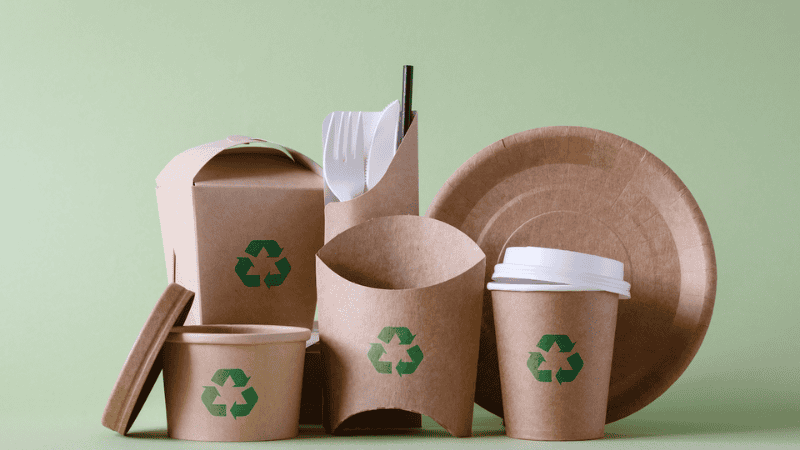
Recyclable packaging is made from materials that can be processed and reused in new products. This process reduces the consumption of raw materials, energy usage, and waste landfilling, thus lowering greenhouse gas emissions and pollution of the air and water.
Common recyclable materials include paper, cardboard, glass, and certain types of plastic.
Businesses often use symbols to indicate that the material can be recycled, helping consumers to sort and dispose of packaging in eco-friendly ways. Advances in processing technologies mean that more types of materials can be recycled more efficiently than ever before.
For example, innovations in pulp molding enable the recycling of paper and cardboard into protective packaging, replacing less sustainable options like Styrofoam.
4. Minimal Packaging
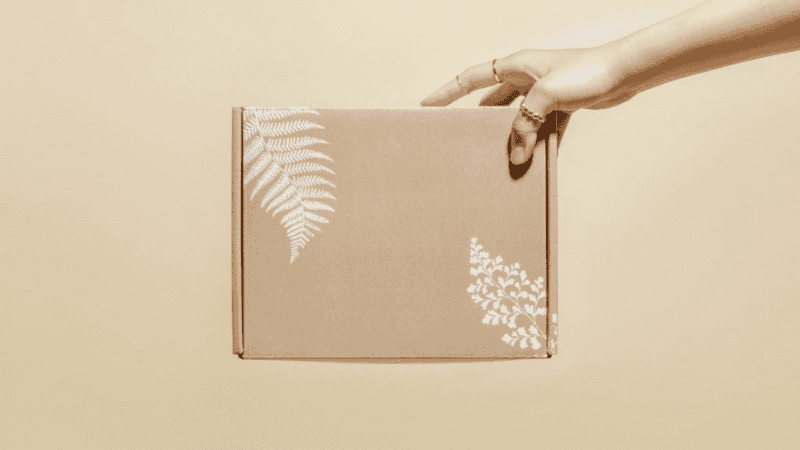
Minimal packaging, also known as minimalist packaging, reduces waste by using the fewest materials necessary to transport the product safely. This approach not only cuts down on waste but also reduces the carbon footprint associated with the production and transport of additional packaging materials.
Minimal packaging strategies include eliminating unnecessary wrappers, reducing packaging layers, and using smaller, lighter packaging options that adequately protect products.
Minimal packaging often requires innovative packaging designs that maximize the use of space and materials. For example, a company might design a toothpaste tube that is squeezable to the last drop, reducing the need for a secondary box.
Another approach is to design packaging that collapses or folds down to a smaller size for disposal, which minimizes space in waste management systems.
23 Eco-Friendly Packaging Examples
Here are 23 examples of creative and environmentally friendly packaging ideas that utilize biodegradable or recycled materials, reduce waste, and promote sustainability.
These packaging solutions help to reduce pollution and promote a healthier planet while still providing effective and attractive packaging for a variety of products.
Biodegradable and Compostable Packaging
Biodegradable and compostable packaging is an eco-friendly alternative to traditional packaging materials. Made from natural materials such as cornstarch or bamboo, these types of plantable packaging can decompose quickly and don’t harm the environment.
They can be disposed of in compost bins or landfills and broken down into natural materials, reducing waste and promoting sustainability. Here are some of the best examples:
1. Coca-Cola PlantBottle
Coca-Cola introduced its innovative PlantBottle packaging as a pioneering step towards sustainable packaging solutions. The PlantBottle design incorporates up to 30% plant-based material, predominantly derived from sugarcane, a renewable resource.
This significant shift from petroleum-based plastics not only reduces dependency on non-renewable resources but also decreases the overall carbon footprint associated with the production of each bottle.
Also, PlantBottle maintains the high recycling capability of traditional PET plastic, ensuring that it can be fully recycled within existing PET recycling systems. Since its launch, the use of PlantBottle has avoided millions of tons of CO2 emissions and demonstrated Coca-Cola’s commitment to integrating more eco-friendly practices into its production processes.
This initiative reflects a broader movement within the industry towards more sustainable practices, setting a positive example for others to follow.
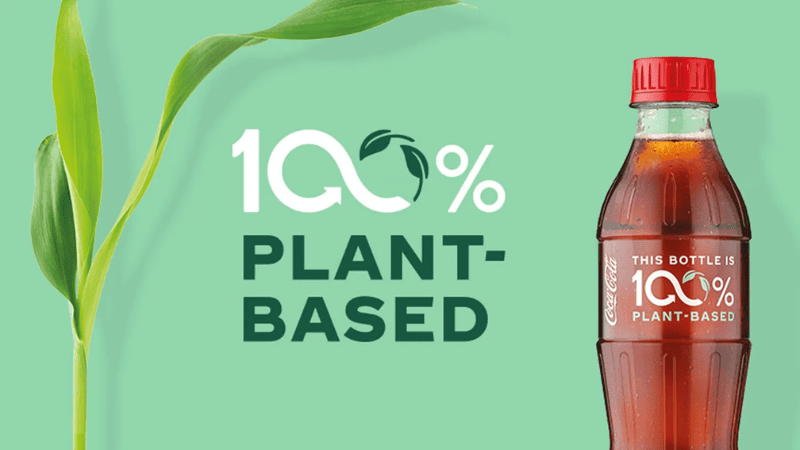
2. TAMGA Designs Cassava-based Mailers
TAMGA Designs has embraced an innovative approach to packaging by using mailers made from 100% biodegradable cassava-based materials.
These mailers are a game-changer in the industry as they are designed to decompose quickly and harmlessly, often within months under the right conditions, unlike traditional plastic mailers that can linger in the environment for hundreds of years.
This swift decomposition helps reduce the accumulation of landfill waste, significantly lowering the potential for environmental pollution.
Also, the cassava used in these mailers is sourced sustainably, ensuring that their production does not contribute to deforestation or harm to ecosystems.
TAMGA’s choice of cassava-based mailers underscores their commitment to environmental stewardship and highlights a viable, eco-friendly alternative to conventional packaging materials, promoting a cleaner, healthier planet.
3. Soapack
Soapack, developed by Mi Zhou, features soap bottles that dissolve in hot water once empty, reducing the need for plastic packaging that can take centuries to decompose. This innovative solution promotes zero-waste practices and reduces plastic pollution.
4. Paper Water Bottle
The Paper Water Bottle Company produces bottles made from 100% recycled content, offering a plastic-free alternative to traditional plastic bottles. These biodegradable bottles decompose quickly and don’t contribute to the plastic pollution crisis, making them an environmentally friendly option for beverage packaging.
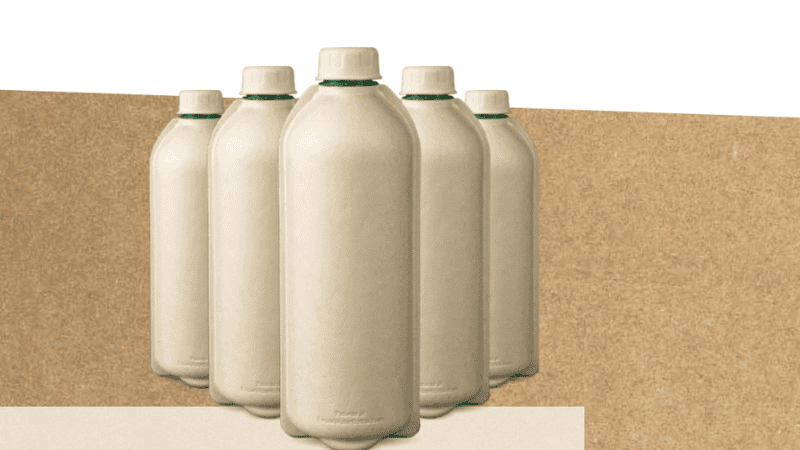
5. Banana Leaf Packaging
Utilized by some supermarkets as an alternative to plastic packaging, banana leaf packaging is biodegradable and compostable. The packaging can decompose naturally once the product is consumed, reducing plastic waste and environmental pollution.
6. Peel Saver
Developed by Yanko Design, Peel Saver is an eco-friendly fry package made from potato skins. The packaging is biodegradable and reduces the need for traditional plastic packaging, contributing to a reduction in plastic pollution.
7. Avani Eco Bags
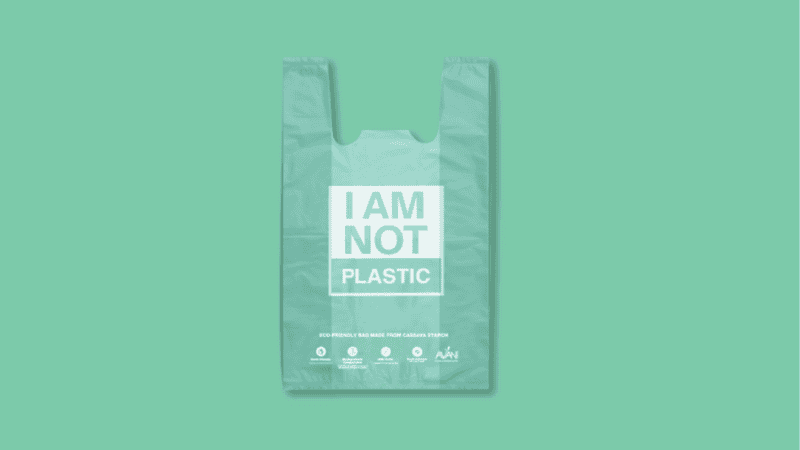
Avani Eco produces biodegradable and compostable bags made from cassava starch. These bags decompose naturally in the environment, reducing pollution and minimizing harm to wildlife.
Avani Eco bags offer a sustainable alternative to traditional plastic bags, helping to mitigate the environmental impact of plastic pollution.
8. Bee’s Wrap
Bee’s Wrap produces eco-friendly food wraps made from organic cotton, beeswax, jojoba oil, and tree resin. These wraps are biodegradable and compostable, offering a sustainable alternative to single-use plastic wrap.
Bee’s Wrap helps reduce plastic waste in the kitchen and promotes environmentally friendly food storage practices.
9. Notpla Liner
Notpla is a company focused on reducing global waste through innovative, biodegradable packaging. The Notpla liner is a water- and grease-proof cardboard takeaway box made from biodegradable materials.
This packaging solution offers a sustainable alternative to traditional single-use plastic containers, reducing environmental impact and promoting a circular economy.
Multiple-use Eco-Friendly Packaging
Multiple-use eco-friendly packaging is a sustainable alternative to traditional packaging materials. This type of packaging is designed to be used multiple times, reducing waste and promoting sustainability.
Made from durable materials such as glass or metal, multiple-use eco-friendly packaging materials can be reused again and again, making it an eco-friendly choice for a variety of products. Here are some of the best examples:
10. Monday’s Child
Monday’s Child has innovatively designed their children’s clothing packaging to serve a dual purpose. Once a dress is removed, the packaging transforms into a dollhouse, extending the lifespan of the packaging and enhancing its value.
This clever design not only delights customers but also encourages reuse, which significantly reduces waste.

By repurposing the packaging in such a creative way, Monday’s Child promotes sustainability and encourages environmentally conscious behavior, aligning with efforts to minimize environmental impact while maximizing user experience.
This approach sets a remarkable example of functional and more sustainable alternatives to packaging in the retail sector.
11. Repack
Repack offers reusable packaging that can be sent back after delivery. Once the goods are emptied, the packaging can be folded into an envelope and returned to be reused, minimizing waste and promoting a circular economy.
12. Hanger Pak
Hanger Pak is a creative clothing box that transforms into a hanger as the packaging is unwrapped. This secondary purpose extends the lifespan of the packaging and reduces the likelihood of it being discarded immediately, promoting sustainability.
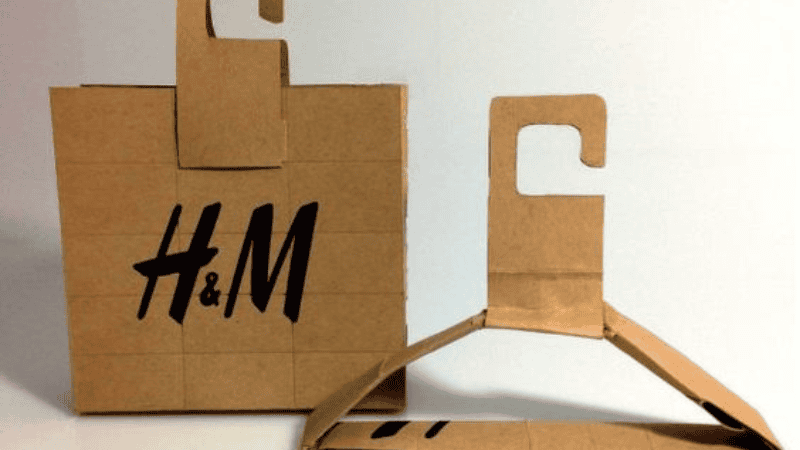
13. Bee Bright
Bee Bright offers honey jars made from 100% beeswax that transform into candles once the honey is consumed. This zero-waste edible packaging solution eliminates the need for additional packaging materials and provides a useful secondary product.
14. Nut Creative
Nut Creative produces transportable wine boxes made from cardboard, which can be repurposed into construction toys after use. This multiple-use packaging reduces waste and provides additional value to the customer.
15. Loop
Loop is a global reuse platform that offers a range of durable, reusable packaging products. Customers receive products in specially designed containers that are collected, cleaned, and refilled after use. Loop helps minimize waste and conserve resources by promoting reuse and reducing single-use packaging.
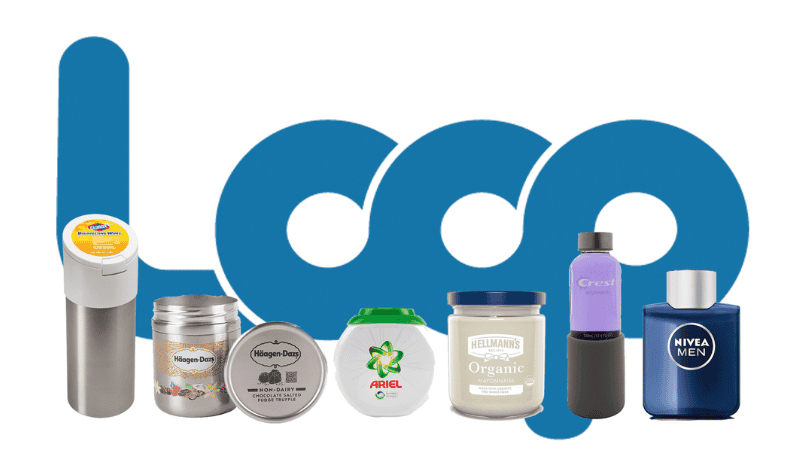
16. Lush, Naked Packaging
Lush Cosmetics offers a range of “naked” packaging-free products, including shampoo bars, bath bombs, and solid moisturizers. These products eliminate the need for traditional plastic packaging, reducing waste and promoting sustainability.
Lush Naked Packaging encourages consumers to adopt zero-waste lifestyles and make eco-friendly choices.
17. Tiffin Carrier
Tiffin carriers, commonly used in South Asian countries, are multi-tiered metal containers used for carrying and serving food. These reusable containers eliminate the need for disposable packaging and help reduce food waste.
Tiffin carriers promote sustainable food consumption practices and reduce the environmental impact of single-use packaging.
Recyclable Packaging
Recyclable packaging is a type of packaging material that can be reused or repurposed after its initial use. It is designed to reduce waste and conserve resources by minimizing the amount of material that ends up in landfills.
Recyclable packaging is becoming increasingly popular as people become more aware of the impact of waste on the environment.
18. New Belgium Brewing
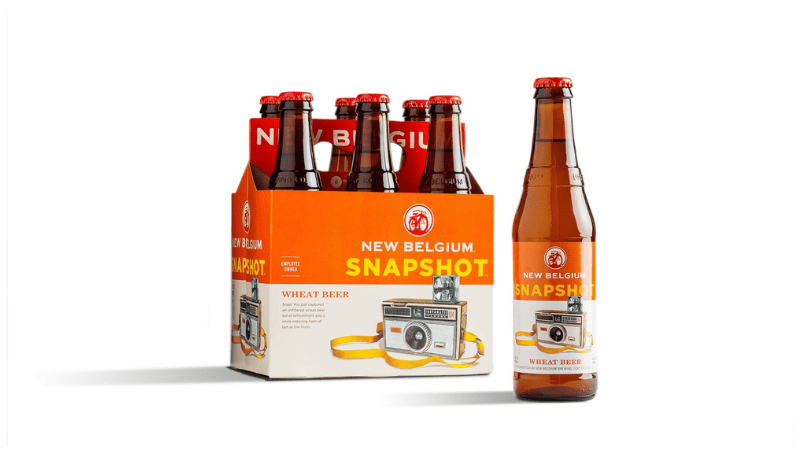
New Belgium Brewing utilizes cardboard packaging made from 100% recycled content for its craft beer range. By using recycled materials, New Belgium reduces the demand for virgin resources and promotes a circular economy.
19. Alima Pure
Alima Pure offers recyclable cosmetic packaging, allowing customers to recycle their empty product containers easily. By using recyclable materials, Alima Pure reduces waste and minimizes its environmental impact.
Minimal Packaging
Minimal packaging, focusing on reducing material use and waste, supports sustainability by lessening the environmental impact during production and after disposal. Below, we explore companies that have excelled in implementing minimal packaging strategies:
20. Sheyn
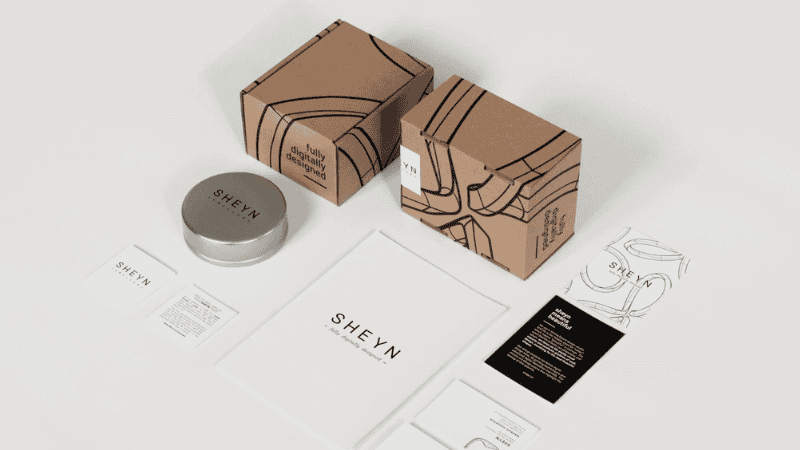
An Austrian design company, Sheyn uses minimal packaging for its 3D-printed jewelry and home decor items. They avoid unnecessary materials and space by utilizing precisely sized packaging that fits the product snugly.
This not only minimizes waste but also reduces the carbon footprint associated with the transportation of their products. Sheyn’s commitment to minimal packaging underscores its dedication to sustainability and efficient design.
21. Brahmaki
A clothing brand committed to ethical fashion, Brahmaki employs minimal packaging in its operations. Their products are shipped in packaging made from recycled materials and are only as large as necessary to protect the items during transit.
This approach reduces the use of natural resources and lowers waste production, aligning with the company’s philosophy of environmental responsibility and mindful consumption.
22. Pangea Organics Bar Soap
Pangea Organics showcases minimal packaging with its bar soaps, which are wrapped in recyclable and biodegradable paper. The packaging is printed with organic soy or vegetable inks, further reducing environmental toxins typically associated with printing processes.
This minimalistic approach not only ensures that the packaging biodegrades quickly but also supports sustainable practices in the supply chain.
23. Warsaw Saints
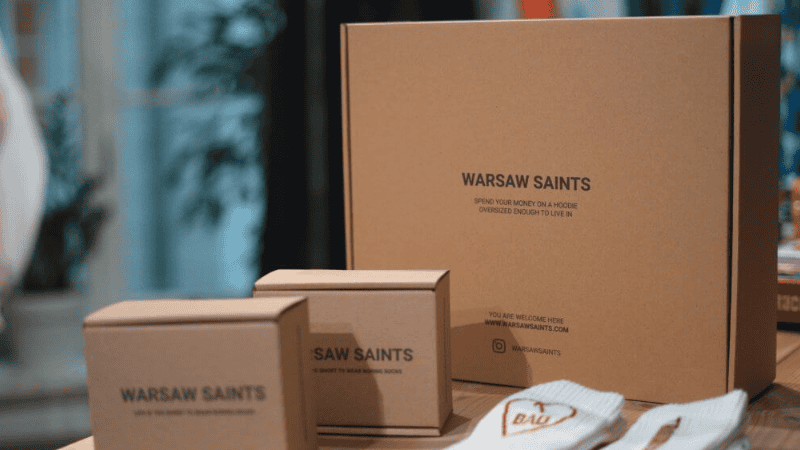
A fashion brand known for its commitment to sustainable practices, Warsaw Saints uses minimal packaging made from recycled and recyclable materials. Their clothing is either shipped without additional packaging or in reusable fabric bags that encourage customers and consumers to avoid single-use packaging.
By reducing the material used in their packaging, Warsaw Saints decreases waste and encourages a circular economy.
Conclusion
The transition towards using eco-friendly packaging is more than just a fad. It’s a fundamental requirement in today’s world. By adopting sustainable materials and creative designs, businesses can have a significant impact on reducing their environmental footprint, preserving natural resources, and promoting a healthier planet.
This shift towards sustainable packaging practices not only supports a circular economy but also reinforces corporate responsibility and builds brand loyalty among customers who are becoming increasingly aware of environmental concerns.
As we continue to observe the packaging industry’s progress, it becomes apparent that implementing sustainable practices is vital for long-term environmental sustainability and for maintaining a stable ecosystem.
Packoi Can Help Create Your Eco-Friendly Packaging
Ready to make a difference with your packaging choices?
Discover Packoi’s range of eco-friendly packaging solutions tailored for businesses committed to sustainability. Packoi helps you minimize environmental impact while maximizing brand appeal, from biodegradable materials to innovative recyclable designs. Join us in our mission to protect the planet.
Explore our products today and take a step towards a greener future! Contact us to learn more about us!


